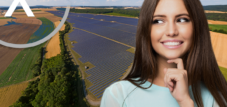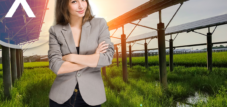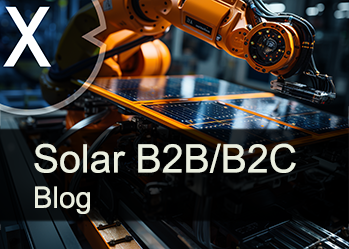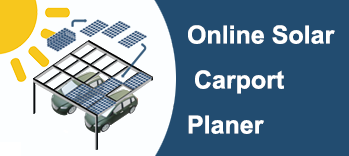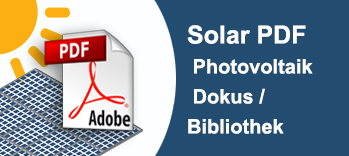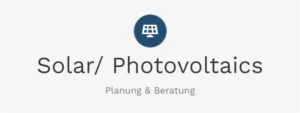Large agri-photovoltaic solar park project in Plauen-Unterlosa
Xpert pre-release
Language selection 📢
Published on: August 12, 2025 / Updated on: August 12, 2025 – Author: Konrad Wolfenstein
Agri-photovoltaics in Plauen: Opportunity for the energy transition or destruction of the landscape?
An innovative energy project is causing discussion
The Plauen district of Unterlosa is at the center of a lively debate about the future of energy production and agriculture. At the end of June 2024, the city council narrowly approved the laying of the foundation stone for an extraordinary project: On an area of 67 hectares, equivalent to approximately 90 football fields, one of the region's largest agri-solar plants is to be built. This modern form of energy generation promises to combine agricultural use and electricity production.
The project is being jointly driven by Pahren-Agrar GmbH, led by René Kolbe, and SUNfarming Projekt GmbH from Erkner. Both companies are pursuing the ambitious goal of not only generating clean energy but also creating optimal conditions for livestock farming and sustainable agriculture.
The vision of dual land use
The planned facility in Unterlosa follows the innovative concept of agri-photovoltaics, in which solar modules are installed in such a way that the underlying land can continue to be used for agricultural purposes. This dual use makes it possible to generate electricity while also raising animals or growing crops without the two uses interfering with each other.
René Kolbe, the experienced farmer and managing director of Pahren-Agrar GmbH, has been running a successful organic farm for years. His company cultivates approximately 2,500 hectares of agricultural land and keeps 900 dairy cows and 100 suckler cows. He also manages an organic laying hen house in Unterlosa with 32,000 hens, producing approximately 21,000 eggs daily. This existing infrastructure provides an ideal basis for the planned agri-solar project.
An experienced partner for solar energy
SUNfarming Projekt GmbH, based in Erkner, Germany, brings extensive expertise to the project. Founded in 2004, the company has already installed over 350 megawatts of photovoltaic systems and operates projects in 15 countries worldwide. Of particular note is its specialization in agri-photovoltaic systems, where the company is considered a pioneer and has developed innovative solutions for combining energy generation and agriculture.
The company employs 105 people at its headquarters in Erkner and 320 project-related employees worldwide. The international company has already successfully implemented agri-solar projects in various German regions, including a 5.1-megawatt farm in Heinsberg, where sheep graze beneath the modules and flowering meadows for bees have been planted.
Technical design and animal welfare
The planned project in Unterlosa envisages installing the photovoltaic modules at a height of at least 2.10 meters, leaving sufficient space underneath for grazing cattle and outdoor housing for organic laying hens. This arrangement creates a favorable microclimate for the animals: The modules provide shade on hot summer days and offer protection from rain and wind.
For organic laying hens, the roof provides additional benefits. The hens are not only protected from extreme weather conditions, but also from birds of prey, which pose a natural threat to free-range chickens. At the same time, the shade makes the required four-square-meter outdoor area per hen more attractive, leading to more frequent use of the outdoor area and thus improving animal welfare.
Ecological and climatic benefits
Agri-photovoltaic technology brings numerous ecological benefits. The solar modules reduce soil moisture evaporation and create a more balanced microclimate. This is particularly important in times of climate change and more frequent droughts, as the plants beneath the modules require less irrigation.
In addition, the photovoltaic system reduces wind erosion, which protects the soil and maintains soil fertility in the long term. Extensive cultivation beneath the modules can also promote biodiversity, as various plant and animal species can settle there, benefiting from the reduced land-use intensity.
The political decision-making process
On June 24, 2024, the Plauen City Council passed the resolution to prepare the project-related development plan for the construction of the agri-solar plant in Unterlosa. This decision was extremely close, reflecting the controversial nature of the project. The city administration emphasized that this was not a municipal project, but rather a private initiative for which the city only needed to create the necessary planning requirements.
Mayor Steffen Zenner emphasized the importance of transparency in the further process and strongly recommended that SUNfarming Projekt GmbH hold a public information evening. This evening will inform the residents of Unterlosa about the details of the project and listen to their concerns.
Critical voices and citizen resistance
The large-scale project isn't universally welcomed. A citizens' initiative has been formed in Unterlosa to oppose the construction of the solar power plant. Critics fear negative impacts on the landscape and see the rural ambiance of the district as being threatened.
Stefan Körner, a local resident who lives just 30 meters from the planned boundary of the development, expressed his disappointment with the city council's decision. Many residents only learned about the project from the newspaper and felt they were not sufficiently involved in the planning process. The citizens' initiative particularly criticizes the fact that the public was not comprehensively informed and consulted prior to the decision.
Nature conservation and landscape conservation area
A particularly controversial aspect of the project is the location of the planned facility. Parts of the proposed site may be located within a landscape conservation area, which could pose additional hurdles under nature conservation law. The Vogtland district has 16 landscape conservation areas with a total area of approximately 41,843 hectares, which accounts for 29.6 percent of the district's area.
Nature conservation associations and the local citizens' initiative argue that large-scale solar power plants could harm the Vogtland region's distinctive landscape. They demand that photovoltaic systems be installed primarily on already sealed surfaces, roofs, or converted land, rather than transforming pristine landscapes.
New: Patent from the USA – Install solar parks up to 30% cheaper and 40% faster and easier – with explanatory videos!

New: Patent from the USA – Install solar parks up to 30% cheaper and 40% faster and easier – with explanatory videos! – Image: Xpert.Digital
At the heart of this technological advancement is the deliberate departure from conventional clamp fastening, which has been the standard for decades. The new, more time- and cost-effective mounting system addresses this with a fundamentally different, more intelligent concept. Instead of clamping the modules at specific points, they are inserted into a continuous, specially shaped support rail and held securely. This design ensures that all forces occurring – be they static loads from snow or dynamic loads from wind – are evenly distributed across the entire length of the module frame.
More about it here:
Agri-solar systems: Win-win for farmers, the environment and regional energy supply
Economic prospects for the region
From an economic perspective, the project promises significant benefits for the participating farmers and the region. By leasing the land for the solar plant, René Kolbe can tap into an additional, weather-independent source of income that supplements his agricultural yields. This is particularly important in times of fluctuating agricultural prices and increasing climate risks.
Pahren-Agrar GmbH has already demonstrated its commitment to innovative agriculture. The company not only produces conventional agricultural products, but also operates biogas plants and generates energy from renewable sources. The planned agri-solar plant would consistently continue this strategy of diversification and sustainable energy production.
Technical innovation and future prospects
SUNfarming Projekt GmbH has developed a sophisticated technical concept for the project in Unterlosa. The facility will be equipped with high-quality glass-on-glass modules with a projected lifespan of 30 to 50 years. These modules are characterized by their semi-transparency, allowing sufficient light for plant growth underneath.
A particularly innovative element is SUNfarming's patented rainwater management system, which ensures that precipitation is evenly distributed across the entire area. This prevents soil erosion and ensures an optimal water supply for the vegetation beneath the modules.
Legal framework and funding
The project benefits from a favorable legal framework. The German federal government's solar package and the 2023 amendment to the Renewable Energy Sources Act explicitly promote agri-photovoltaics as an innovative form of dual land use. Agri-PV systems compliant with DIN SPEC 91434 receive a higher remuneration of 9.5 cents per kilowatt hour, which significantly improves the economic viability of such projects.
A key advantage is that the land under agri-PV systems continues to be considered agricultural assets under agricultural and tax law. This means that farmers retain their tax benefits and the farms can be preserved for future generations.
International experiences and success stories
Agri-photovoltaics is already established internationally and is showing promising results. Successful projects have been implemented in various countries that have increased both energy production and agricultural productivity. For example, yield increases of 20 to 60 percent have been observed in grape cultivation under agri-PV systems.
There are already successful reference projects in Germany as well. The agri-solar plant in Rathenow, also operated by SUNfarming, has become a popular demonstration site for farmers' associations from across Germany. There, mother cows and their calves graze beneath the solar panels, benefiting from the shade and protection the plant provides.
Challenges and solutions
Despite their many advantages, agri-PV projects face several challenges. The permitting procedures are complex and can take up to three years. This is primarily due to the fact that large-scale installations require a zoning plan process, which includes extensive environmental assessments and public participation processes.
Another aspect is public acceptance. As the Unterlosa example shows, it is important to inform the public about such projects early and comprehensively. Transparent communication and citizen involvement in the planning process can help reduce reservations and build trust.
Impact on local energy supply
The planned agri-solar plant in Unterlosa would make a significant contribution to the local energy supply. With an area of 67 hectares and modern photovoltaic technology, the plant could achieve an output of several megawatts, thus meeting the electricity needs of thousands of households.
This decentralized energy generation strengthens the region's energy independence and reduces dependence on fossil fuels. At the same time, it contributes to achieving climate policy goals pursued at both the national and regional levels.
Future of rural areas
The project in Unterlosa is a prime example of the transformation of rural areas in times of climate change and the energy transition. Agri-photovoltaics offers farmers new prospects and can help stabilize farms economically and prepare them for the future.
Especially for organic farms, which often face higher production costs and fluctuating market prices, additional income from solar power generation can provide important financial security. This makes it possible to practice organic farming even in difficult times while contributing to climate protection.
The way forward
As planning for the agri-solar plant in Unterlosa continues, it becomes clear that such projects require careful preparation and comprehensive communication. Experience shows that dialogue with the local community should be initiated from the outset to build trust and find solutions together.
The project has the potential to become a model for successfully combining energy production, agriculture, and nature conservation. If the concerns of local residents can be addressed while simultaneously realizing the ecological and economic benefits, Unterlosa could become a pioneer for sustainable development in rural areas.
The coming months will show whether all parties involved can agree on a compromise that meets both the requirements of climate protection and the needs of the local community. The planned agri-solar project represents the major challenges and opportunities associated with the energy transition in rural areas.
Look, this little detail saves up to 40% installation time and costs up to 30% less. It's from the USA and patented.

New: Assemble-ready Solar systems! This patented innovation accelerates your solar construction massively
The heart of ModuRack's innovation is its departure from conventional clamp fastening. Instead of clamps, the modules are inserted and held in place by a continuous support rail.
More about it here:
Your partner for business development in the field of photovoltaics and construction
From industrial roof PV to solar parks to larger solar parking spaces
☑️ Our business language is English or German
☑️ NEW: Correspondence in your national language!
I would be happy to serve you and my team as a personal advisor.
You can contact me by filling out the contact form or simply call me on +49 89 89 674 804 (Munich) . My email address is: wolfenstein ∂ xpert.digital
I'm looking forward to our joint project.







